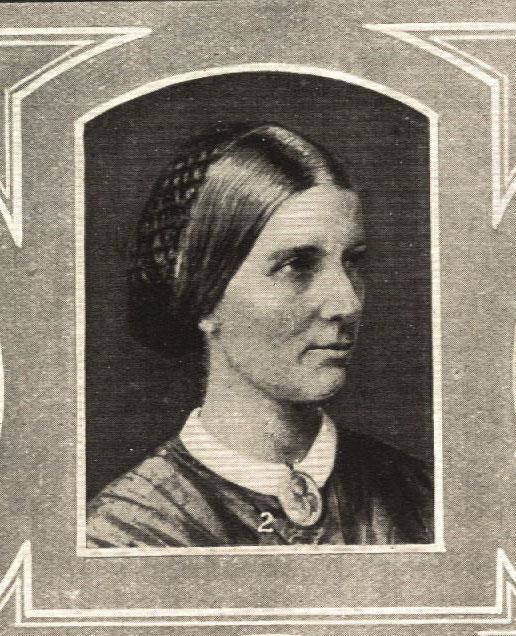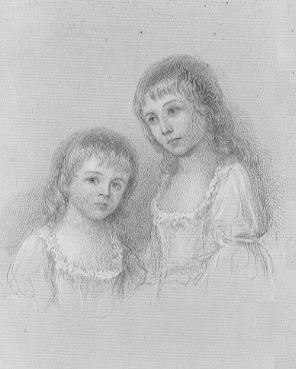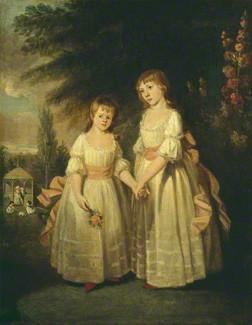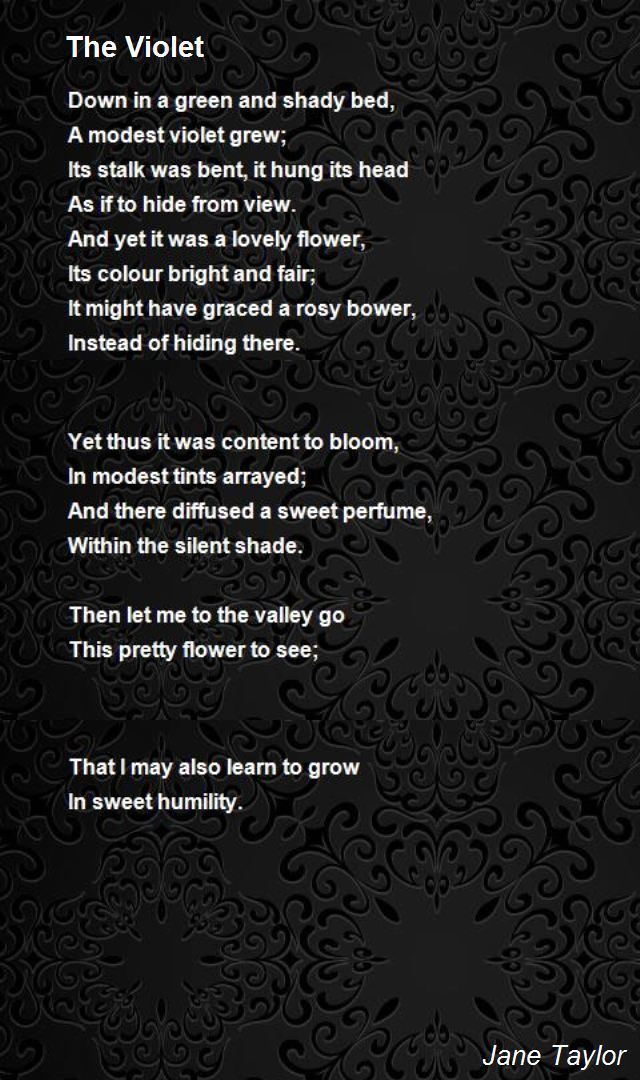Occupation Poet Siblings Ann Taylor | Role Poet Name Jane Taylor | |
 | ||
Born 23 September 1783London, England ( 1783-09-23 ) Books Twinkle - Twinkle - Little Star, Rhymes for the Nursery, Twinkle, Essays in rhyme on morals an, Little Ann - and other poems | ||
The star by jane taylor
Jane Taylor (23 September 1783 – 13 April 1824) was an English poet and novelist. She wrote the words to the song "Twinkle, Twinkle, Little Star", which is known worldwide, but its authorship generally forgotten. The sisters and their authorship of various works have often been confused, in part because their early works were published together. Ann Taylor's son, Josiah Gilbert, wrote in her biography, "Two little poems–'My Mother,' and 'Twinkle, twinkle, little Star,' are perhaps, more frequently quoted than any; the first, a lyric of life, was by Ann, the second, of nature, by Jane; and they illustrate this difference between the sisters."
Contents
- The star by jane taylor
- Poem the violet by jane taylor
- Early life
- Literary career
- Death
- Popular influence
- References

Poem the violet by jane taylor
Early life

Born in London, Jane Taylor lived with her family at Shilling Grange in Shilling Street, Lavenham, Suffolk, where her house can still be seen. Later (1796–1810) she lived in Colchester. It is a majority belief among local historians that the rhyme was written in Colchester – although Ongar still makes a claim, both in Essex. The Taylor sisters were part of an extensive literary family. Their father, Isaac Taylor of Ongar, was an engraver and later a dissenting minister. Their mother, Ann Taylor (née Martin) (1757–1830), wrote seven works of moral and religious advice, two of them fictionalised.
Literary career

The collection Original Poems for Infant Minds by several young persons was solicited by the publisher Darton and Harvey and published anonymously as "by several young persons". The primary contributors to the volume were Ann Taylor, Jane Taylor and Adelaide O'Keeffe; Bernard Barton and various members of the Taylor family contributed verse to it as well. As Donelle Ruwe wrote in her study of the genesis and reception history of the collection, it was issued as a single-volume work in 1804, and when it proved successful, further poems were solicited for an additional volume, which was published in 1805. Over time, the collection became associated with the Taylor family. Although O'Keeffe wrote to the publisher requesting a greater percentage of the collection's proceeds, Darton and Harvey deferred to the Taylor family regarding all editorial decisions. For their part, the Taylor family was openly hostile to O'Keeffe and dismissive of her background in writing for the stage. (O'Keeffe's father was the popular Irish playwright John O'Keeffe.)
Following the success of Original Poems for Infant Minds, Ann and Jane Taylor published the poetry collections Rhymes for the Nursery in 1806 and Hymns for Infant Minds in 1810. In the two volumes of Original Poems for Infant Minds, the Taylor sisters, O'Keeffe and the other contributors were identified as authors for each poem by initial or other identifying markers. In Rhymes for the Nursery (1806), Ann and Jane Taylor were not identified as authors of the collection or of individual poems. The most famous piece in the 1806 collection is "The Star," more commonly known today as "Twinkle, Twinkle, Little Star", which was set to a French tune.
Christina Duff Stewart identifies authorship in Rhymes for the Nursery based on a copy belonging to Canon Isaac Taylor, who noted the pieces by Ann and Jane Taylor. Canon Isaac was Taylor's nephew, a son of her brother Isaac Taylor of Stanford Rivers. Stewart also confirms attributions of Original Poems based on the publisher's records.
Jane Taylor also wrote the popular moral verse, The Violet, which begins:
Taylor's novel Display (1814), reminiscent of Maria Edgeworth or perhaps even Jane Austen, went through at least thirteen editions up to 1832. Her Essays in Rhyme appeared in 1816, and contained some significant poetry. In the fictional Correspondence between a Mother and Her Daughter at School (1817), Taylor collaborated with her mother. The Family Mansion. A Tale appeared in 1819, and Practical Hints to Young Females previous to 1822.
Jane Taylor accepted the editorship of the religious Youth's Magazine. She wrote numerous shorter pieces for the magazine, including moral tales and personal essays, and these were collected in The Contributions of Q. Q. Throughout her life, Taylor wrote many essays, plays, stories, poems, and letters which were never published. She was also erroneously named as author of works such as The Authoress (1819), Prudence and Principle (1818), and Rachel: A Tale (1817).
Death
Jane Taylor died of breast cancer at the age of 40, her mind still "teeming with unfulfilled projects".. She was buried in Ongar churchyard.
After her death, her brother Isaac collected many of her works and included a biography of her in The Writings of Jane Taylor, In Five Volumes (1832).
